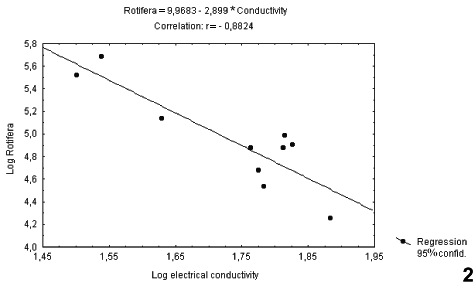The rotifer community in Lago Amapá (abandoned meander lake of the Rio Acre floodplain) was investigated with respect to seasonal changes. Sampling was performed at three collection stations, generally weekly, during the dry season between May 8, 1997 and October 31, 1997, and during the rainy season between January 2, 1998 and February 24, 1998. The density and composition of rotifer species (48 taxons of rotifers) were determined, and their diversity and abundance were observed to be greater, respectively, at high-water and low-water. Anova was performed, by means of the F test, to test for seasonal differences in environmental variables and rotifers, showing that there was a highly statistically significant difference for pH and transparency (p < 0.01). Pearson's correlation was used to show that rotifer numbers during the low-water phase correlated negatively with electrical conductivity (r = -0.8824, p < 0.05) and during the high-water phase correlated negatively with depth (r = -0.7513, p < 0.05). Seasonal changes, caused by an increase in water levels and the low diversification of niches, influenced the composition and abundance of the animal group studied.
Floodplain; high water phase; low water phase; Rotifera community







